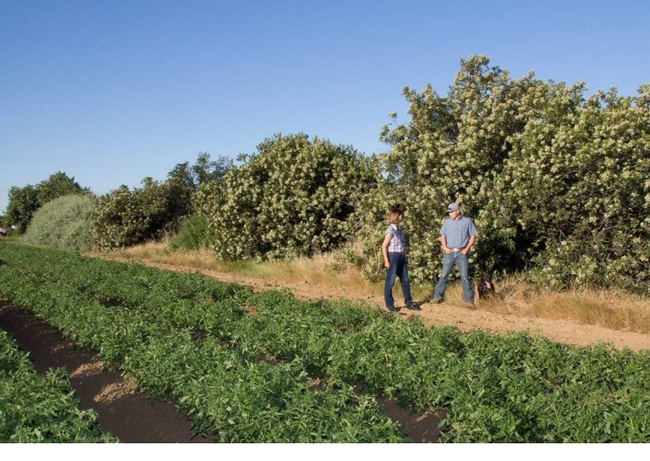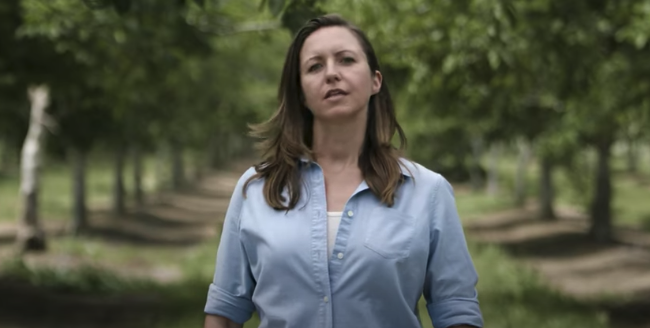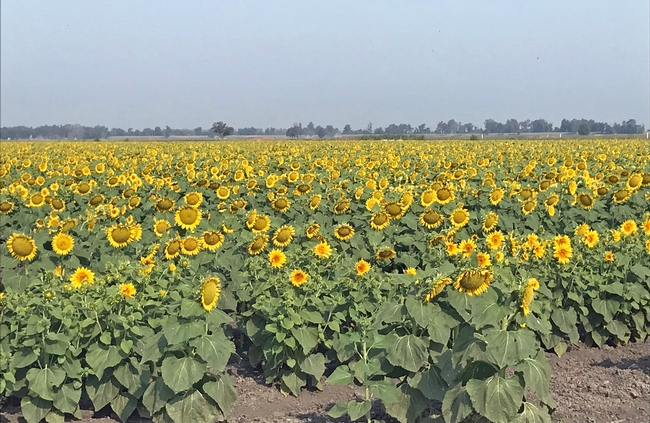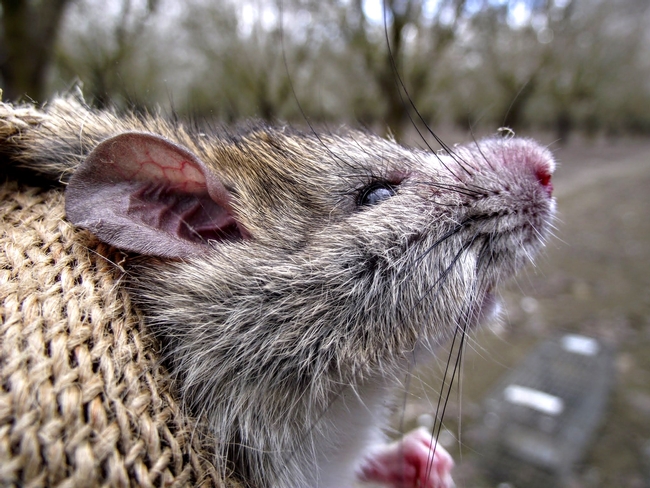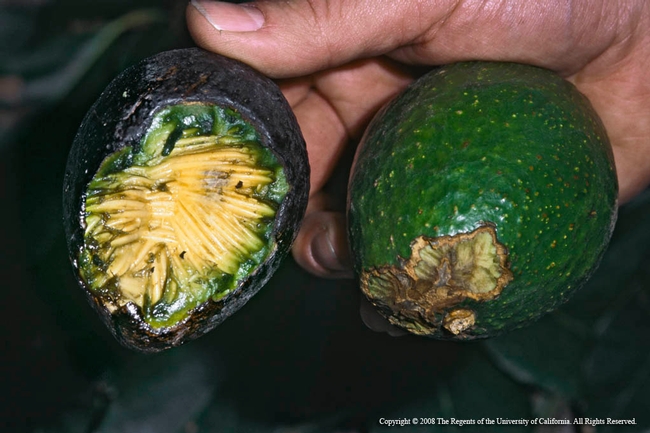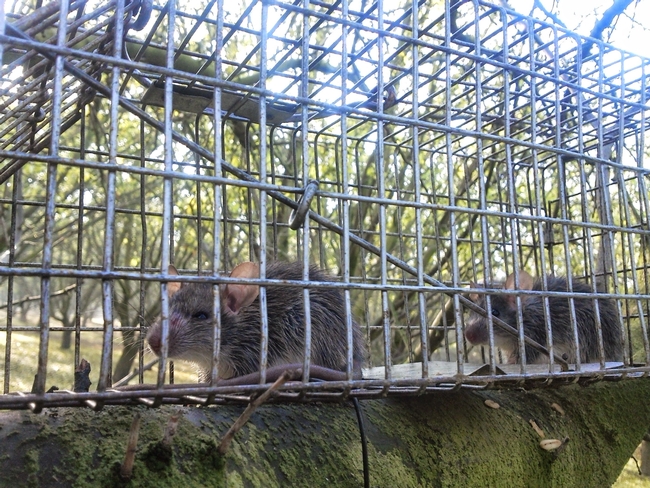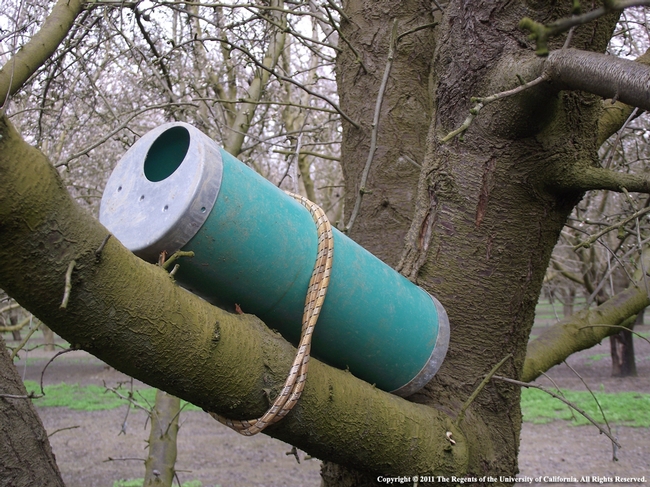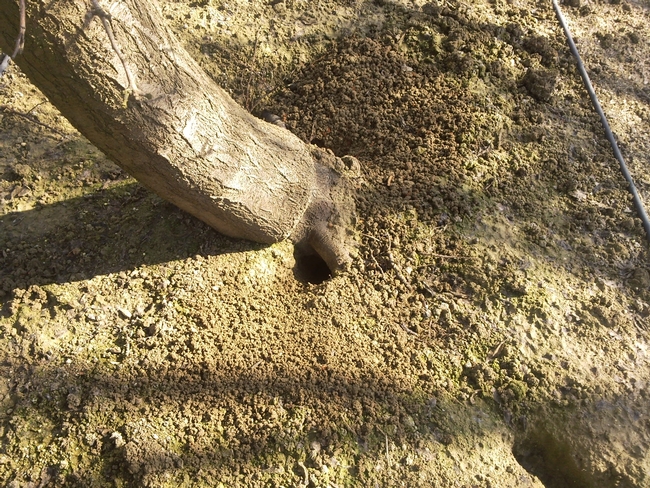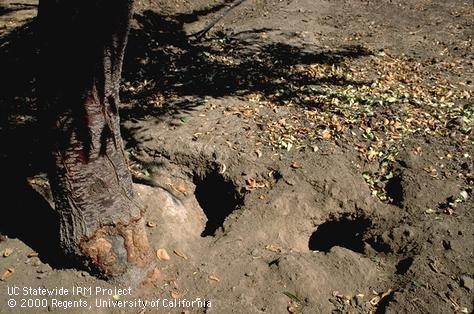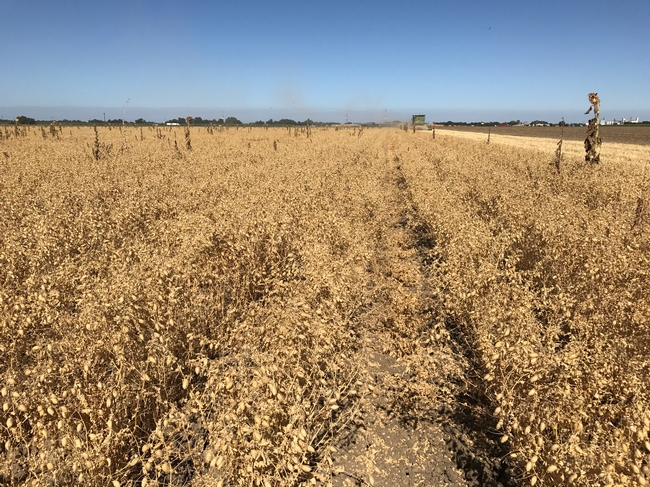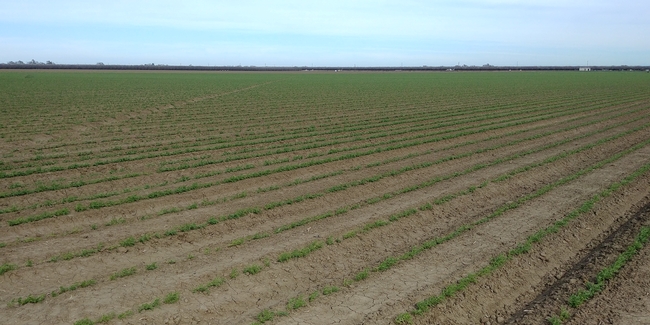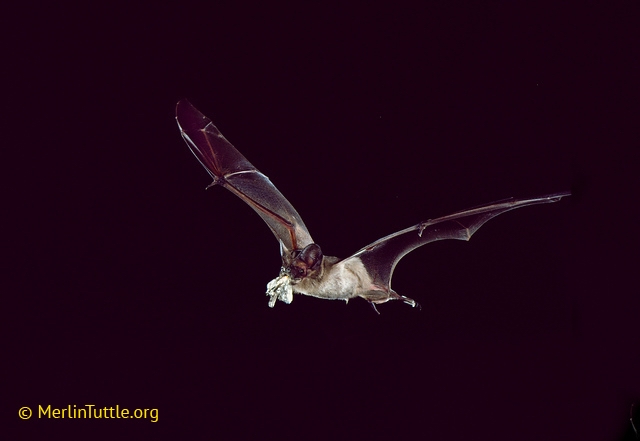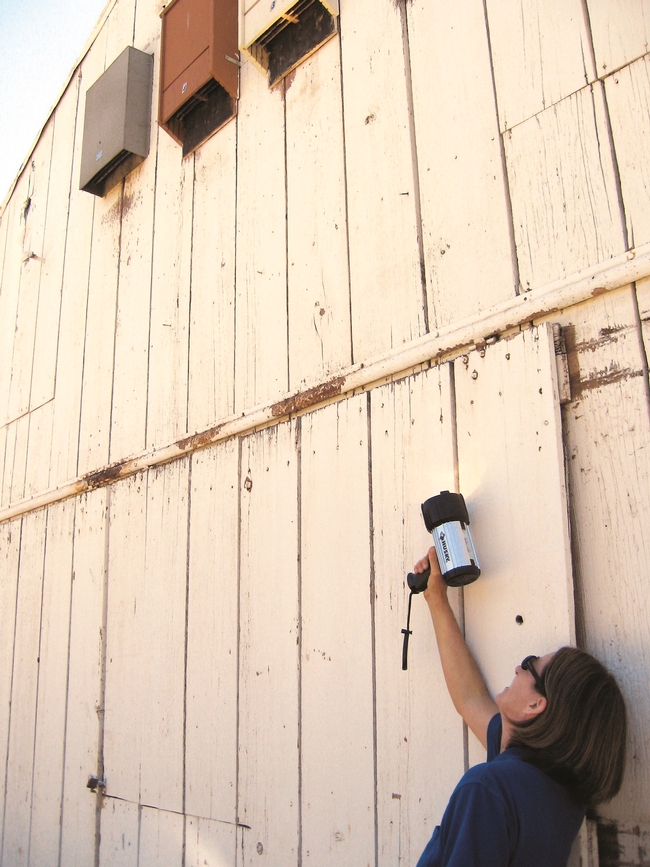Posts Tagged: Rachael Long
Daniel and Sarah Hrdy create endowment to fund UC Cooperative Extension research
The Yolo County walnut growers will provide as much as $100,000 per year for “practical” research
The University of California Division of Agriculture and Natural Resources (UC ANR) announced that Dan and Sarah Hrdy, owners of Citrona Farms LLC, a walnut farm in Winters, have established The Daniel & Sarah Hrdy Fund for UC Cooperative Extension Research.
The fund will provide as much as $100,000 in seed funding for early-stage research projects each year for UC Cooperative Extension advisors and specialists, as well as their academic collaborators. Dan, a former clinical professor of medicine (infectious diseases) at UC Davis Medical Center, and Sarah, a professor emerita of anthropology at UC Davis, created the fund to express their appreciation for UC Cooperative Extension's practical yet cutting edge research.
“Over the years, we have hosted a number of researchers from UC ANR, UC Davis and UC Berkeley studying topics related to sustainable agriculture, habitat restoration and wildlife conservation and have benefited both directly and indirectly from the UC Cooperative Extension network,” said Dan Hrdy. More than 20 years of UC research hosted at Citrona Farms is detailed on their website at www.citrona.com.
Research proposals will be selected by the leaders of UC ANR's Strategic Initiatives: Sustainable Food Systems; Endemic and Invasive Pests and Diseases; and Sustainable Natural Ecosystems.
Areas of special interest include:
- Sustainable Agriculture, with special regard to climate change
- Interaction of Natural Ecosystems and Agriculture
- Habitat Restoration and Conservation
- Wildfire and Forest Restoration
"The timing for this donation could not have been better as UC ANR is actively recruiting an extraordinary number of new UCCE advisors and specialists and support for their research is greatly appreciated," Wendy Powers, UC ANR associate vice president, said. “This is a great example of how local relationships build trust and support for UCCE efforts across the state."
The fund will be established with annual gifts as part of a payout from the donor's retirement account, along with a bequest that, when paid, will create a permanent endowment where the payouts will continue to fund this project. The Hrdys hope to make others aware of this method of charitable giving.
"We were able to use required payouts from a retirement account to set up this gift,” said Dan Hrdy. “I hope more people will look into doing this to help support Cooperative Extension.”
Investors who must satisfy a required minimum distribution from their retirement accounts may consider a qualified charitable distribution (QCD), said Greg Gibbs, UC ANR executive director of Development Services.
“A qualified charitable distribution is a direct transfer of funds from your IRA custodian, payable to a qualified charity, like the UC Regents/UC ANR,” Gibbs said. “Once you've reached age 72, the QCD amount counts toward your required minimum distribution for the year, up to an annual maximum of $100,000. It's not included in your gross income and does not count against the limits on deductions for charitable contributions.”
New UC ANR cost study for growing hybrid sunflower seeds helps farmers estimate costs
A new study on the costs and returns of producing hybrid sunflower seed in the Sacramento Valley has been released by the UC Agriculture and Natural Resources' Agricultural Issues Center for farmers who are considering growing hybrid sunflower seeds.
“Although the acreage is relatively small – about 50,000 acres in the Sacramento Valley – hybrid sunflower seed is an important crop because California growers produce the seed for planting stock, destined to be planted in many areas around the world for oilseed and confectionary snack food markets,” said Sarah Light, UC Cooperative Extension agronomy advisor and co-author of the cost study.
Authors Rachael Long, Mariano Galla and Light received input and reviews from fellow UC Cooperative Extension farm advisors and agricultural industry cooperators for the study, which is based on a typical farm in the Sacramento Valley producing field and orchard crops.
“One thing new in our cost study is that it's based on a crop that is irrigated with subsurface drip as opposed to flood,” Long said.
The study estimates the cost of hybrid sunflower seed production on 200 acres as part of a row crop rotation, using subsurface drip irrigation. The subsurface drip irrigation tape is replaced every seven years. Annually, 15 percent, or 30 acres, of the subsurface drip tape is replaced.
To avoid cross-pollination with other sunflower varieties, hybrid sunflower seed production requires at least a 1.25-mile field isolation or different planting times. In this study, male sunflower seed is planted in three rows on a single 5-foot bed and female seed is planted in two rows on three 5-foot beds. The field ratio is 25 percent male parent lines to 75 percent female parent lines. With two hives per acre, honey bees are used to cross-pollinate between the parent lines. The male lines are destroyed after pollination to prevent seed contamination of the female lines.
The authors used current production practices to identify costs for the sunflower crop, including material inputs and cash and non-cash overhead. The study includes tables that show profits over a range of prices and net yields, monthly cash costs, costs and returns per acre, hourly equipment costs, and the whole farm annual equipment, investment and business overhead costs.
The new study, “Sample Costs to Produce Sunflowers for Hybrid Seed in the Sacramento Valley – 2018,” can be downloaded for free from the UC Davis Department of Agricultural and Resource Economics website at http://coststudies.ucdavis.edu.
Sample cost of production studies for many other commodities are also available at the website.
For additional information or an explanation of the calculations used in the studies, contact the Agricultural Issues Center at (530) 752-4651 or UC Cooperative Extension advisors Rachael Long at rflong@ucanr.edu, Sarah Light at selight@ucanr.edu, or Mariano Galla at mfgalla@ucanr.edu.
Roof rats unnerve farm workers, damage orchard crops
Monitor for rodent activity and use bait stations before the growing season to prevent problems, UC ANR scientists recommend.
Roof rats are running rampant in California orchards this year, according to UC Agriculture and Natural Resources scientists.
“In pistachio and other nut orchards, roof rats are burrowing and nesting in the ground where they're chewing on irrigation lines, causing extensive damage,” said Rachael Long, UC Cooperative Extension advisor. “They are also nesting in citrus trees, feeding on the fruit and terrifying field workers when they jump out as people are picking fruit. The chewing pests are also girdling citrus limbs, causing branch dieback.”
The wet winter of 2017 led to lots of weed seeds for rats to eat. “Last season, rats were also nibbling on pomegranates, avocados, and other fruit and nut crops, rendering them unmarketable,” Long said.
Holes in the ground around the base of pistachio trees throughout a Yolo County orchard puzzled the grower.
“We looked for ground squirrels, but never saw any,” Long said. “We set up game cameras, but only got birds and rabbits. We put rodent bait in the holes, but the digging didn't stop.”
Long, the pest detective, cracked the case by consulting Niamh Quinn, UC Cooperative Extension human-wildlife interactions advisor based in Irvine. “She informed us that the damage we were seeing was from roof rats.”
Burrowing roof rats sounds like an oxymoron. While roof rats generally don't burrow in urban environments, their country cousins have been known to burrow.
“It's not true that they don't burrow,” Quinn said. “When I worked as staff research associate for Roger Baldwin, UC Cooperative Extension wildlife specialist, that is mostly what we studied, burrowing roof rats in orchards.”
Control measures
Baldwin said, “It seems to be a good year for rats in a number of different areas and crops throughout the state. I've received more questions and comments about rats this year than perhaps the last 10 years combined. As for bait application, putting bait down burrow systems for rats doesn't usually work too well, so I'm not surprised that approach didn't work. Growers will likely have better luck with bait stations in the trees.”
Because the rats climb, Baldwin suggests attaching bait stations to tree branches.
“In addition, elevating the bait stations will eliminate access to bait for many protected mammal species, such as kangaroo rats,” Long said. “The bait diphacinone grain can be purchased from some ag commissioners' offices. This is what Roger Baldwin said they tested and it worked.”
As for the bait stations, they should be designed so that there isn't any spillage for nontarget animals to eat, Long said.
When roof rat outbreaks occur, rodenticides are often needed to prevent crop damage. However, timing is critical as diphacinone use is highly restrictive and not allowed during the growing season, which is beginning as the weather warms.
“Check the product label for application instructions,” Long reminds growers. “It's the law.”
Identifying the pest
One way for growers to identify whether they have roof rats is by the size of the burrows. The nocturnal pests are active above ground in trees and below ground.
“Roof rats can forage away from their nest, so you won't likely find signs of their activity, such as rat droppings outside their burrow, to help identify them,” Long said.
Ground squirrels are active during the day, so they are more likely to be seen, dig holes about 4 inches in diameter and forage above ground near their burrows. Vole and mouse holes are 1- to 2-inches in diameter. Roof rat holes are typically 3 to 4 inches in diameter and might have nut shells in front of them, for example pistachio or almond shells. Rabbits will feed on seedling crops, but do not dig burrows.
Roof rats are prolific breeders that reproduce year-round, according to Baldwin. Females typically have three to five litters per year with five to eight young, enabling their populations to rapidly increase. The omnivores feed on a wide variety of plant and animal materials, allowing them to adapt to any environment, including urban and agricultural lands.
“Rats are sneaky and hard to spot,” Long said. “If you see damage, including digging in the soil but no wildlife, suspect rats.”
For more information on controlling roof rats, download Quinn and Baldwin's free UC ANR publication 8513, Managing Roof Rats and Deer Mice in Nut and Fruit Orchards at http://anrcatalog.ucanr.edu/Details.aspx?itemNo=8513.
For more information about ground squirrels, download the free UC IPM Best Management Guidelines http://www.groundsquirrelbmp.com or UC IPM Pest Note http://ipm.ucanr.edu/PMG/PESTNOTES/pn7438.html.
UC estimates costs and returns for growing garbanzo beans
The UC Agriculture and Natural Resources' Agricultural Issues Center has released two new studies on the estimated costs and returns of producing garbanzo beans, also known as chick peas, in the Sacramento and San Joaquin Valleys.
“Although acreage is relatively small, garbanzos are an important crop because California growers produce the large, cream-colored seed that's used for the canning industry, often used for garnishes for salads,” said Rachael Long, UC Cooperative Extension farm advisor serving Sacramento, Solano and Yolo counties.
The studies estimate the cost of producing garbanzo beans on 200 acres as part of a row crop rotation, using subsurface drip irrigation. A three-row bed tillage implement shallowly chisels, tills and reshapes the beds, avoiding disturbance of the buried drip tape left in place. Planting of seed treated for fungal and seedling diseases, Ascochyta rabiei, Rhizoctonia and Pythium, into residual soil moisture occurs in December. Seeding rates for the garbanzo beans are 85 pounds per acre.
Input and reviews were provided by UC ANR Cooperative Extension farm advisors and other agricultural associates. Assumptions used to identify current costs for the garbanzo bean crop, material inputs, cash and non-cash overhead. A ranging analysis table shows profits over a range of prices and yields. Other tables show the monthly cash costs, the costs and returns per acre, hourly equipment costs, and the whole farm annual equipment, investment and business overhead costs.
“The importance of these studies right now is that they are currently being used to help secure USDA crop insurance for garbanzo production, expected in 2020,” Long said.
The new studies are titled “Sample Costs to Produce Garbanzo Beans (Chick Peas), in the Sacramento and Northern San Joaquin Valleys – 2018” and “Sample Costs to Produce Garbanzo Beans (Chick Peas), in the Southern San Joaquin Valley – 2018.”
Both studies can be downloaded from the UC Davis Department of Agricultural and Resource Economics website at http://coststudies.ucdavis.edu. Sample cost of production studies for many other commodities are also available at the website.
For additional information or an explanation of the calculations used in the studies, contact the Agricultural Issues Center at (530) 752-4651 or the local UCCE Farm Advisors; Sarah Light, selight@ucanr.edu, Rachael Long, rflong@ucanr.edu, Michelle Leinfelder-Miles, mmleinfeldermiles@ucanr.edu, or Nicholas E. Clark, neclark@ucanr.edu.
Bats, allies to farmers, return home to roost in spring
Bats, those night-flying creatures of horror film fame, are beginning to migrate back to the Central Valley. It is an annual journey for most bats, flying south for the winter and returning home in the spring to their birth place to roost and give birth to their own pups during the summer.
“I'm getting a number of calls from people who see bats and are worried about them,” said Rachael Long, UC Cooperative Extension advisor for Sacramento, Solano and Yolo counties. “If people see bats on the ground or tucked into eaves, they're likely resting, not sick, from their long migration north.”
Because the insect-eating winged mammals are important allies to U.S. farmers, Long hopes people won't harm the bats while they are tired and vulnerable. Bats feed on some of the most damaging crop pests – including the moths of cutworms and armyworms – which helps to protect food crops naturally.
Farmers appreciate the pest control provided by bats and many look forward to having bats return to their farms each year, according to Long, who coauthored a study of farmer perceptions of wildlife recently published online in Conservation Letters, a journal of the Society for Conservation Biology.
“Most of the farmers surveyed reported that they like bats and the pest control and crop protection services they provide,” Long said. “Many put up bat boxes on their farms to provide a home for them.”
In their long journey north, bats need to rest along the way. Sometimes they turn up in areas where they're not wanted, such as in a corner of a porch or in an eave. The presence of bats is often revealed by their mouse-like droppings, or guano.
“In the sun, the guano sparkles, as it's made of bits of insect parts, making it a good source of nitrogen for plants,” Long said.
Bats live for about 30 years and bear only one pup a year. Males roost independently of females and their pups, so if you see a lone bat, it's likely a bachelor.
“If you find a bat, please leave it alone if it's not bothering anyone because it may be perfectly healthy, just tired,” Long said. “A farmer somewhere may be waiting for that bat to come home to help protect crops from insects.”
If you see a bat on the ground, Long suggests placing a box over it and calling a wildlife rescue organization, such as Northern California Bats in Davis. She recommends wildlife rescue because animal control officers must euthanize all bats they catch to test for rabies, which may be unnecessary unless a person or a pet had contact with the bat.
Further reading:
Migrating bats may be resting, not sick, says UC bat expert
Farmer Perceptions and Behaviors Related to Wildlife and on-farm Conservation Actions
UC Integrated Pest Management Pest Note on Bats

